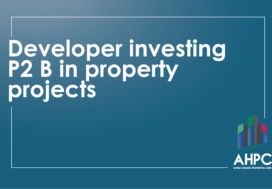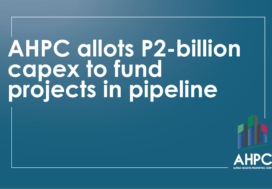Sustainability is increasingly becoming a buzzword in the real estate industry, but what are the benefits of embracing the concept?

Sustainability is a term often thrown around to boast the compliance of a project to certain standards, whether economic or environmental, or even both. But beyond the good ring the word gives, sustainability is a commitment property developers in the Philippines now actively pursue to give more value to residents and contribute to making the country more attractive to local and foreign investors.
Adopting green approaches in real estate development is increasingly becoming the norm in the market. In this day and age, those that have embraced environment-friendly practices have a better chance to get ahead in the game. Without a doubt, the world is already changing; climate change is already posing risks to properties and livelihood, which could negatively affect the overall economy. This is the primary driver of industry players’ cooperation to achieve their sustainable goals.
According to a McGraw-Hill Construction report published in 2013 titled World Green Building Trends, green building or sustainable development has also been seen as a business opportunity that satisfies client and market demand. The eco-conscious business community composed of property investors and potential homebuyers have their eyes set on developments that have established their reputation in this scene.

Solar panels on rooftops. Photo via Depositphotos
In the Philippines, the concept of sustainability is yet to fully blossom. While there are already established standards like the Philippines Green Building Council’s BERDE and the Green Building Code, most developers have taken it upon themselves to consciously exert efforts to fulfill their individual green targets.
For most of these developers, the potential economic benefits are worth the investment. A study in 2016 by Dodge Data & Analytics and US Green Building Council said sustainable development provides financial and economic perks. For instance, environmental buildings are believed to result in lower operating costs due to savings on utilities and energy, as well as on lifespan costs.
To achieve this, developers are now utilizing clean energy trends like using LED light, innovating architecture to let in more natural light and air, installing solar panels, and implementing energy-efficient, waste disposal, and water-saving systems.

Energy efficient lightbulb. Photo via Depositphotos
It is vital for developers to employ these strategies as residential and commercial buildings take the biggest slice of total energy consumption. In 2013, they accounted for 63% of the 38.9 million MWh consumption, according to the Department of Energy.
This is hitting two birds with one stone. By employing energy-saving strategies, developers will not only enjoy an eventual decline in operating costs but also help future tenants and residents cut their energy spending.
For some of the newer developments, sustainability efforts start from choosing building materials and goes on to the construction process itself. And as the community is becoming more aware of climate change, sustainability becomes a huge factor in making a property a good investment vehicle.
Take for instance Alpina Heights, an enclave of several mid-rise residential condominium buildings in Parañaque City catering to young individuals and growing families. Aside from providing low-density living in the midst of the busy metropolis, Alpina Heights wants its residents to experience the sustainable lifestyle and contribute to global efforts to eradicate environmental hazards.
Alpina Heights is equipped with energy-friendly and sustainable features. It harnesses the sun’s energy to power most of its common areas. Its buildings are ideally designed to allow in more natural lighting and air, therefore cutting energy consumption especially during the day. Furthermore, Alpina Heights employs water conservation techniques with its water treatment and rainwater conservation facilities. In each unit, bathrooms are equipped with water-saving dual-flush toilets.

One-bedroom unit at Alpina Heights. Photo from Alpina Heights Developent Corp.
The development is also lush with greeneries, from the bushes to the trees. This allows its residents to stay close to nature and breathe in fresh air.
What’s even more interesting is that a pre-selling condo unit in Alpina Heights are considerably more affordable than other developments with similar sustainable features. One-bedroom units with one balcony start at Php1.9 million. On the other hand, two-bedroom units with two balconies and two toilets and bathroom only cost Php3.45 million.
Each unit is designed to have waterproof vinyl planks for flooring, tinted window glasses, and granite kitchen countertops. Units are also equipped with features like smoke detectors and sprinklers, as well as telephone and cable outlets and water heater outlets. Aside from electrical outlets, each unit has USB ports for charging gadgets.

Two-bedroom unit at Alpina Heights. Photo from Alpina Heights Developent Corp.
All these and the other topnotch amenities make Alpina Heights an attractive investment for residents and investors looking for sustainable assets.
As sustainability becomes a mandatory consideration for developers, it is a must for home buyers and property investors to choose projects that are truly committed to responsible developments. But at the end of the day, home buyers and developers alike should be able to work hand-in-hand to raise environmental awareness, sensitivity, and action.
Find out more about the eco-friendly advantages offered by Alpina Heights. Call (+63) 9178427512, e-mail sales@alpinaheights.com, or visit alpinaheights.com.
Read Here: http://www.myproperty.ph/blog/feature-stories/sustainability-real-estate-whats-store-developers









